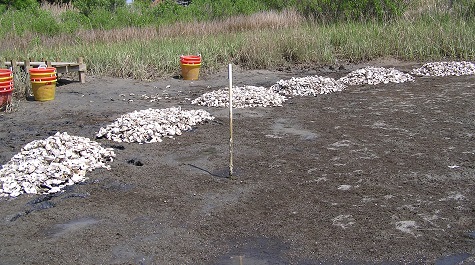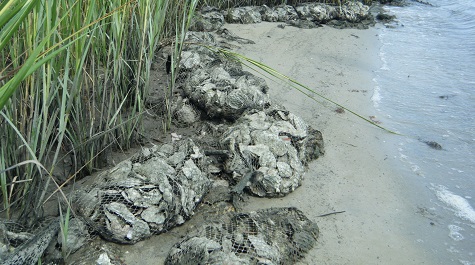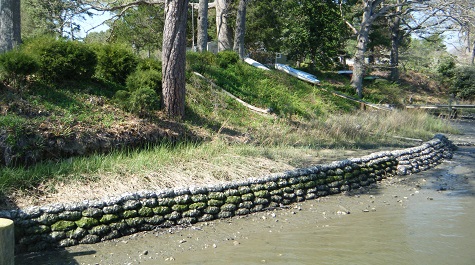Shell-Based Reefs
Shell-based living shoreline reefs are designed with loose or contained shell. Loose, uncontained shell is highly suitable for shellfish recruitment, but is not usually effective for reducing wave height and energy except for very low energy settings. Contained shell in bags or cages can be placed in similar arrangements as stone sills for better wave attenuation. Shell-based reefs located next to natural or planted tidal marshes will increase the living shoreline habitat diversity.
Suitable Sites
- Evidence of healthy native shellfish population in vicinity, e.g. oyster beds and/or ribbed mussels
- Salinity always above 10 ppt; sites with salinity below 5 ppt are not suitable for growing oysters
- Water depth at least 1 foot at low tide; intertidal reefs are subject to freezing and winter die-off
- Firm bottom, not soft mud
Guidelines for Shell-Based Reefs
- Use shell material from a local, sustainable source like restaurant recycling programs or discarded shells from commercial seafood businesses. Natural shellfish reefs should not be harvested for this purpose.
- Use biodegradable, non-plastic containment materials
- Intertidal reefs must withstand wave action, wave overtopping and extreme temperature stresses; place shell so it is not carried away by normal wave action
- Subtidal reefs may need to be marked as navigation hazards
- Promptly remove failed or damaged materials




